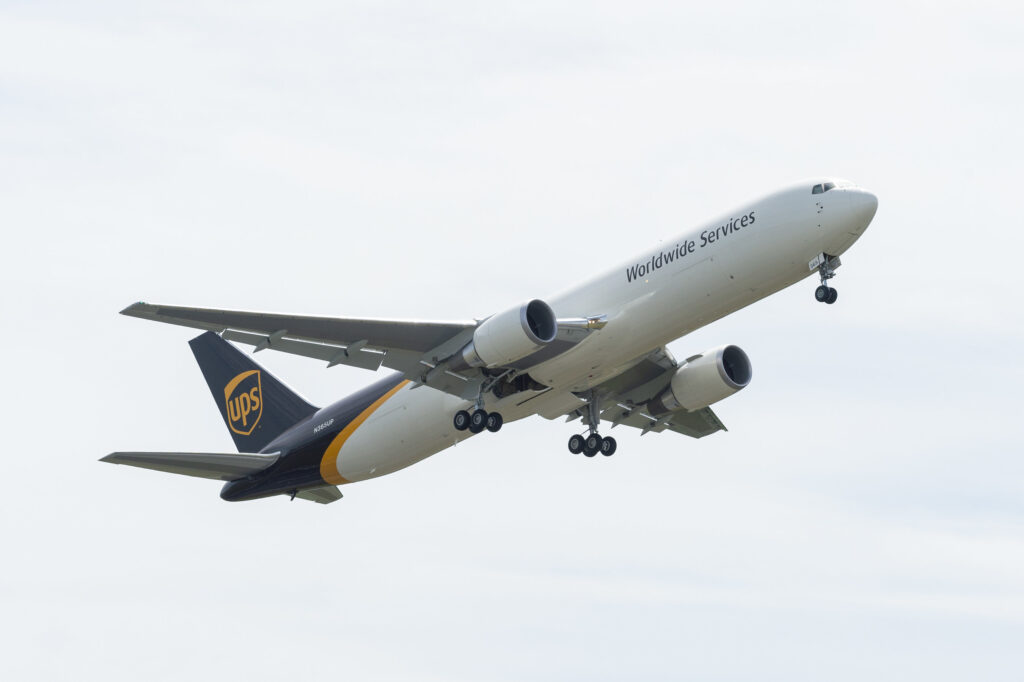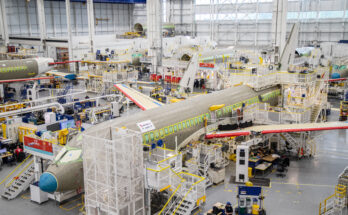
The recently passed U.S. Federal Aviation Administration (FAA) reauthorization act exempts new Boeing 767-300F freighters from FAA emissions requirements until 2033. The measure thus grants a reprieve for the freighter, enabling it to remain in production five years longer than otherwise would have been the case. President Biden signed the reauthorization act on May 16, 2024.
In February 2024, the FAA issued a final rule implementing new greenhouse gas emissions standards from the U.S. Environmental Protection Agency (EPA). The standards apply to new type design airplanes, defined as newly developed aircraft designs that have not previously been type certificated by the FAA and are not yet being built or flown. However, starting on January 1, 2028, the standards will also apply to in-production aircraft, defined as new-build aircraft with designs already type certificated by the FAA.
The 767-300F does not meet the new standards and, without an exemption from the rule or a modification to the aircraft’s design, would not have been able to remain in production after 2027. The new FAA funding act, though, contains language that exempts from the standards any subsonic, purpose-built freighter that was certificated prior to 2023 and has a maximum takeoff mass greater than 180,000 kilograms (396,832 pounds) but not more than 240,000 kilograms (529,109 pounds). As clearly intended by legislators, the 767-300F meets this definition. The exemption is to remain in effect until January 1, 2033.
Thus, Boeing can now continue producing the 767-300F up to the end of 2032. And, should Congress enact an extension to the exemption sometime in the future, the production life of the freighter could conceivably continue even beyond that year.
One wild card in the situation is that the FAA emissions standards match International Civil Aviation Organization (ICAO) standards, and the ICAO standards do not include an exemption for the 767-300F. Thus, it is quite possible that new 767-300Fs built from 2028 will be limited to operating within the United States. A number of nations, however, could ultimately decide to allow operation of these aircraft.
Even should 767-300Fs built after 2027 be restricted to U.S. operations, it could well be worthwhile for Boeing to continue production of the aircraft. As of April 30, 2024, the order backlog for the 767-300F totaled 34 aircraft, divided between U.S. package delivery specialists UPS (19) and FedEx Express (15). The two freight carriers might well continue to require new 767-300Fs beyond 2027 for use within the U.S. domestic market, opting to utilize the 767-300F for service to smaller destinations rather than larger freighters based on the Boeing 777 or Airbus A350.
It should be noted that the ICAO and FAA emissions standards do not apply to existing in-use aircraft, and will not require aircraft built before 2028 to undergo retrofit or modification.
Raymond Jaworowski currently co-authors three of Forecast International's best-selling products: Civil Aircraft Forecast, Military Aircraft Forecast, and Rotorcraft Forecast. As a contributor to Aviation Week & Space Technology's Aerospace Source Book, he has authored Aircraft Outlooks, and provided input for the publication's Aircraft Specifications tables. Raymond has represented Forecast International at numerous conferences and trade shows, often as a featured speaker. He is a member of the American Helicopter Society.




